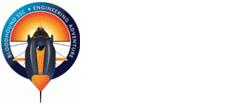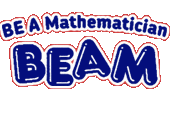Years 5 & 6: Measures
This list consists of activities, games and videos designed to support the new curriculum programme of study in Years 5 and 6. Containing tips on using the resources and suggestions for further use it covers:
Year 5: converting between different units of metric measure, understanding and using equivalences between metric and imperial units, measuring and calculating perimeter and calculating and comparing the area of rectangles.
Year 6: solving problems involving measure,converting between standard units of measure,converting between miles and kilometres, use formulae for area and volume when possible, calculating areas of parallelograms and triangles and calculate, estimate and compare the volume of cubes and cuboids. using standard units, extending to other units.
Visit the primary mathematics webpage to access all lists.
Mensuration
Developed for primary and non-specialist maths teachers, these two booklets are aimed to provide subject knowledge, highlight misconceptions and offer practical tasks on measurement. All highlighted pages refer to booklet A.
Making 2-D nets into a 3-D shapes in the practical tasks on pages 19-26 will help children see that 3-D shapes have volume. Cubes and cuboids of different size could be constructed and then the volumes calculated and compared.
Pages 51 -59 offer examples of calculating the volume of cuboids and examples for use in class. The volume of other shapes is not required at primary level but may be of interest to teachers wishing to extend gifted children.
Pages 27-32 offer example questions on conversion between metric and imperial measures, including worded problems.
Data, Graphs, Charts, Measures and Money
Converting measures is a topic that many children find difficult and there is usually a wide range of abilities in every class. These resources may be used to demonstrate and practise converting a variety of metric measures of mass, capacity and length.
The Measures counting stick and Converting measures show the conversions between metric units of capacity and mass, the starting number and steps to take along the stick can be selected. It also shows a conversion graph between miles and kilometres.
Converting units of measure shows the conversions between a variety of metric measures of mass, capacity and length. The units are chosen and then an amount is input, the conversion can then be revealed. Included are two problems in context, the second using imperial measures of length. Teacher guidance is included.
Area and Perimeter Resource Bank
This treasure chest of resources contains 19 activities, which investigate area and perimeter. Page 6 asks children to find the area of various rectangles and then come up with the formula to calculate it. Children in Year 6 are asked to recognise when it is possible to use formulae to find the area of shapes so page 16, which investigates how to find the area of circles should give then something to think about.
Go Further with Investigations
A collection of 40 investigations designed for use with the whole class or smaller groups. It is aimed at upper KS2 but some activities may be adapted for use with more able children in lower KS2. It covers different curriculum areas of mathematics.
Double Measures on sheet 22(page 53 on the pdf) investigates shapes with a constant area and different perimeter and shapes with the same perimeter and different areas. It also provides further questions for children to explore.
Dotty Squares on sheet 27(page 63 ) investigates the different sized squares that may be drawn on dotty paper and finding the area of each. It could also be carried out using triangles or rectangles.
Perimeter Dots on sheet 35(page 73) Exploration of different triangles measured in terms of 'perimeter' dots and 'inside' dots. It looks at different types of triangle: equilateral, isosceles, acute-angled, obtuse-angled and right-angled.
Location, Location, Location (Key Stage Two)
When considering speed, what better place to start then with the fastest car on Earth! The first part of this lesson uses the BLOODHOUND SSC land speed attempt as a context for teaching about speed. Starting with speeds of familiar things, like a child walking or running then looking at other moving objects is a nice way of introducing children to the units of speed. Through the lesson children develop their understanding of speed by comparing the speeds of different objects and ordering them.
Volume and Capacity: an Activity Pack
21 cards containing practical activities for children to explore volume and capacity. These tasks allow children to develop their mathematical skill by actively estimating, measuring and comparing capacity and volume. They really get children thinking about measure.
Activities include:
• free play with a variety of containers in contrasting shapes and sizes
• comparing the capacities of containers by pouring the contents of one into another
• measuring and comparing the capacities of containers by filling them with any smaller non-standard containers
• measuring and comparing the capacities of cuboid boxes by filling them with small cubes
• estimating and finding the capacities of all sorts of containers
• using displacement of water as a means of measuring volume






